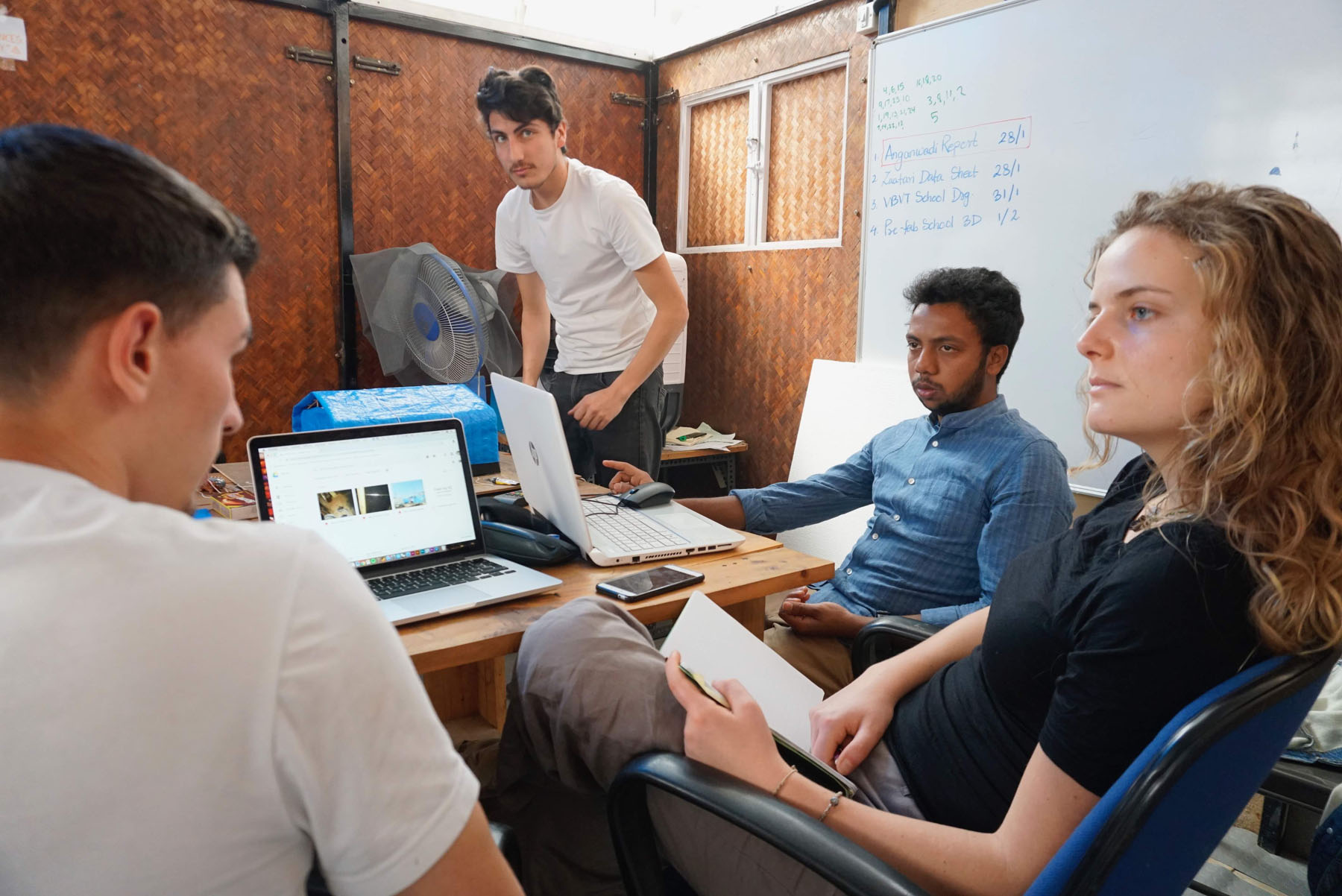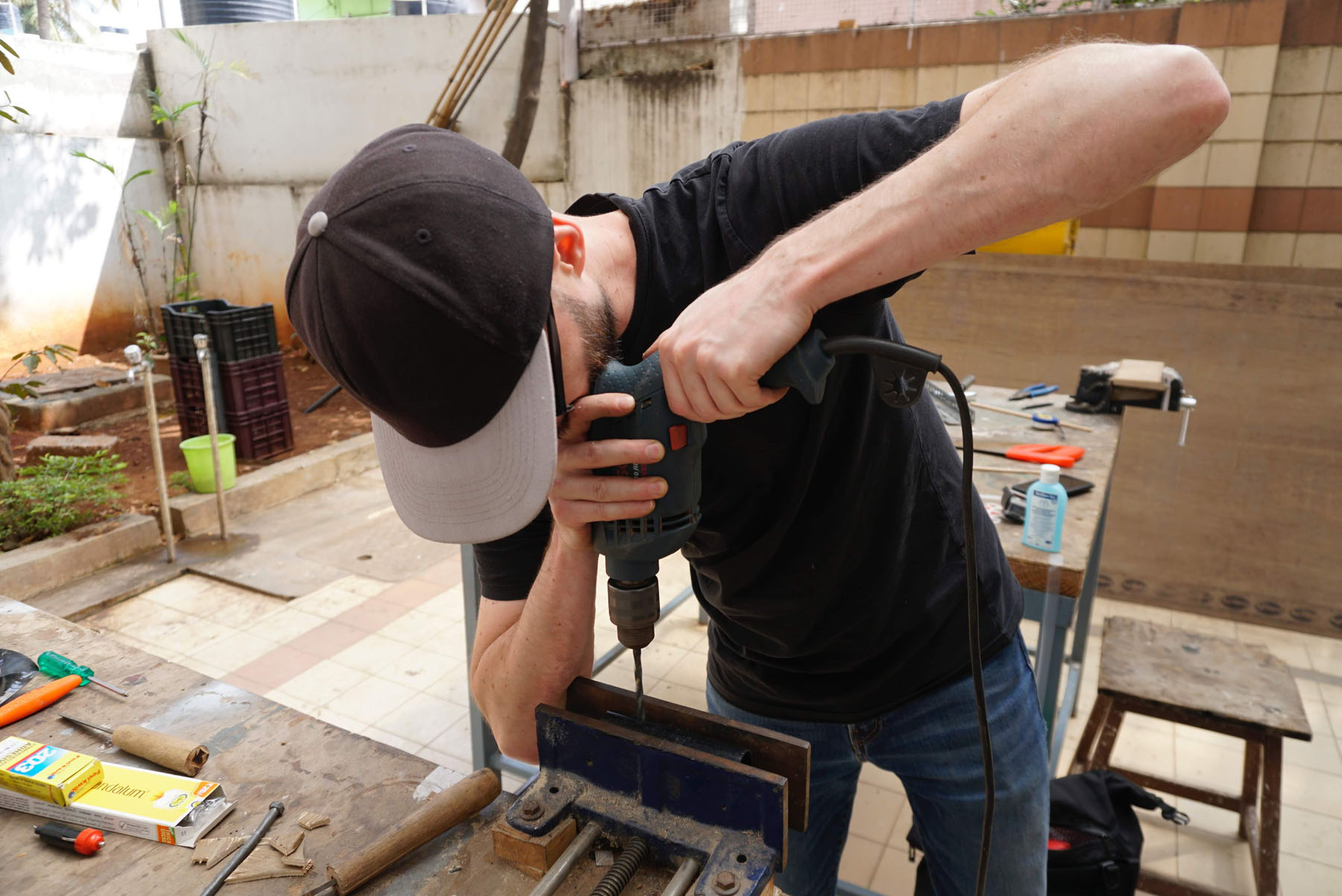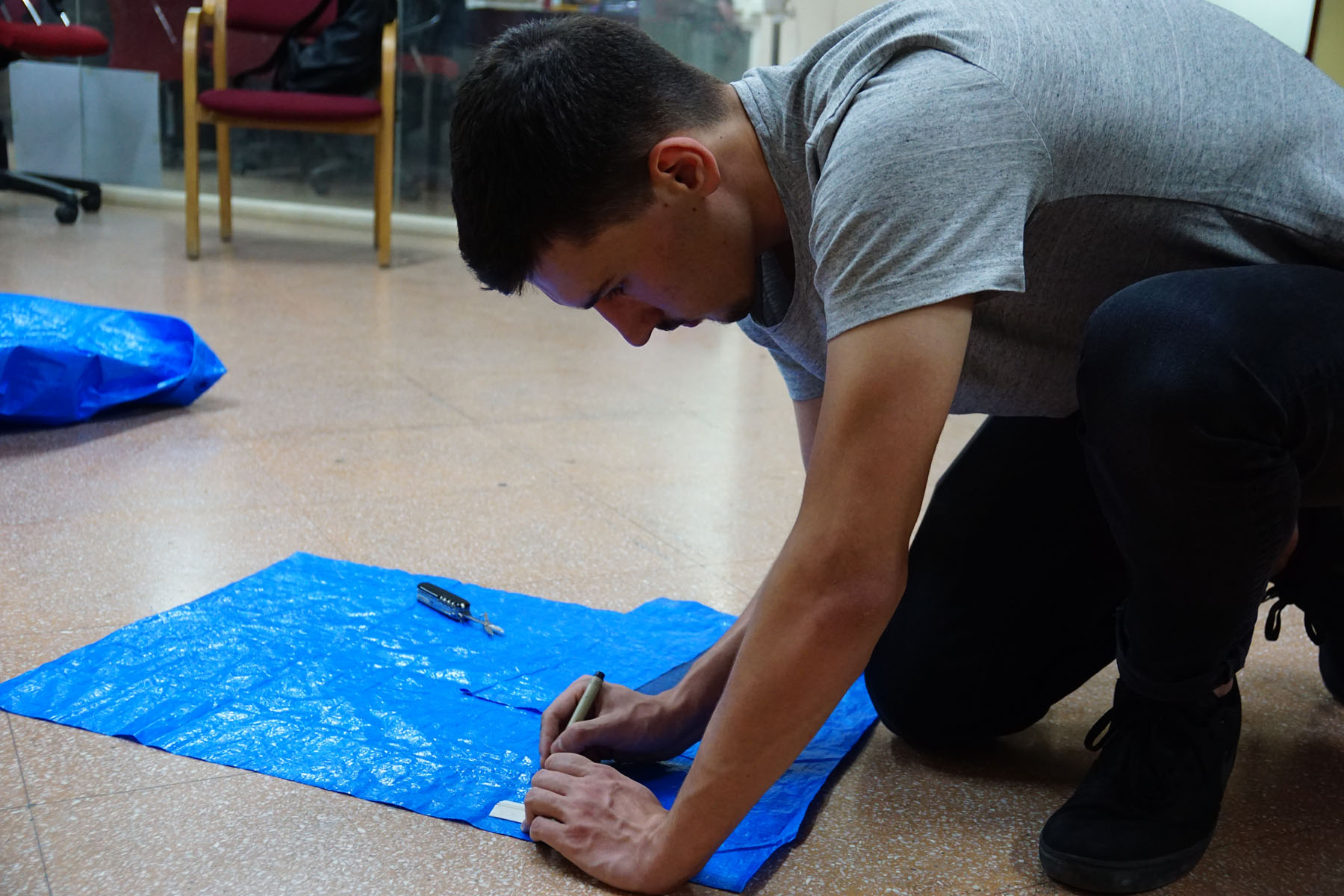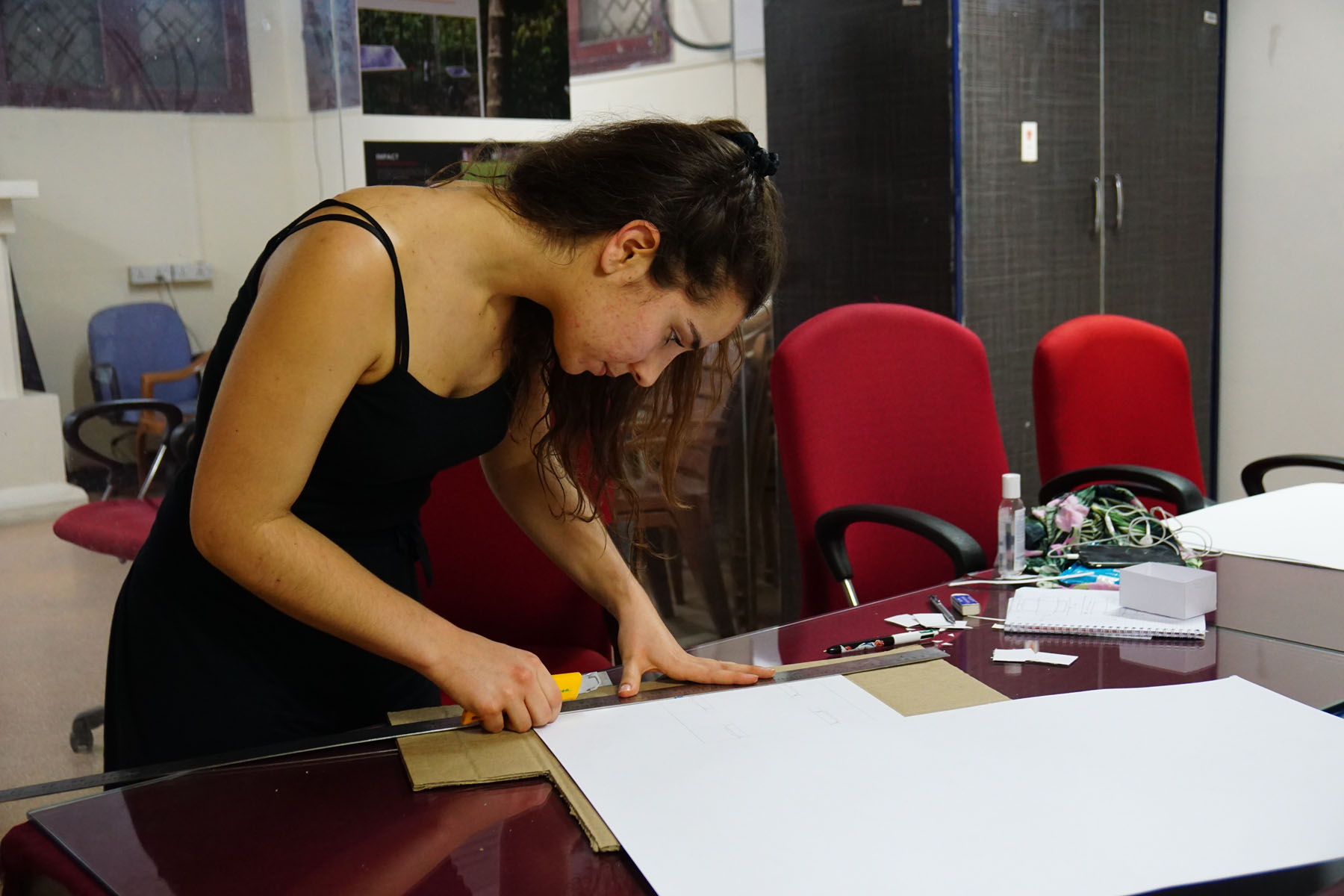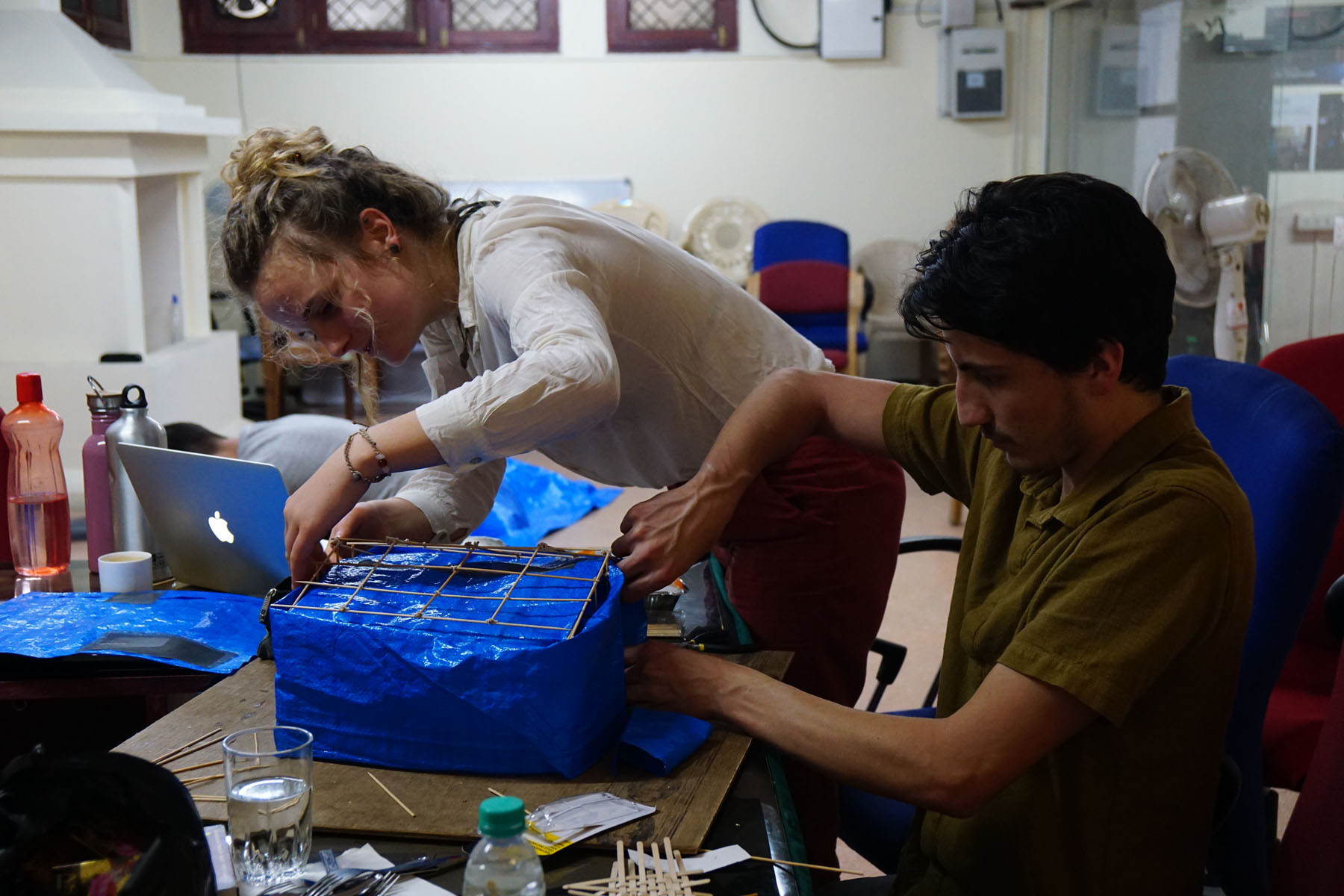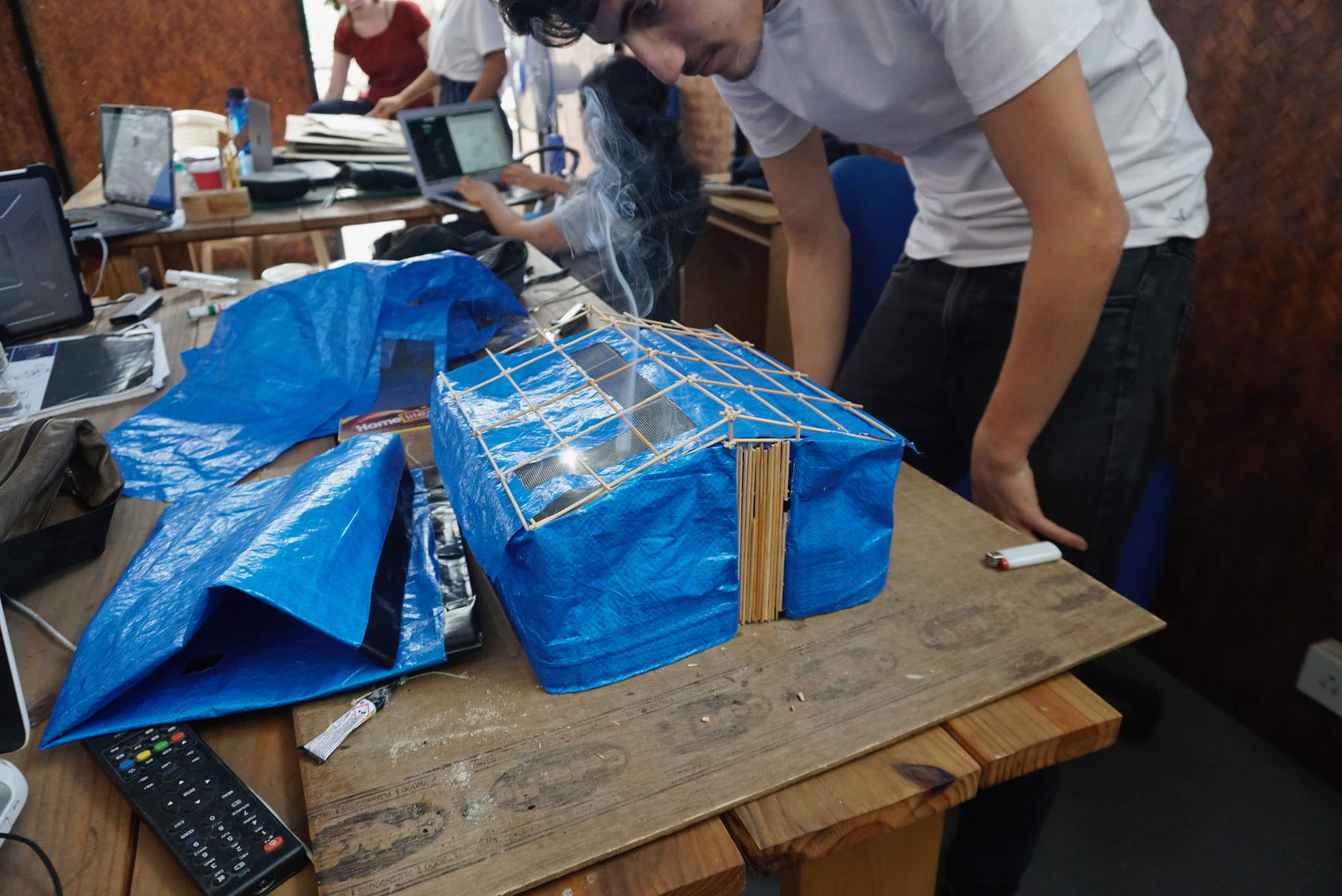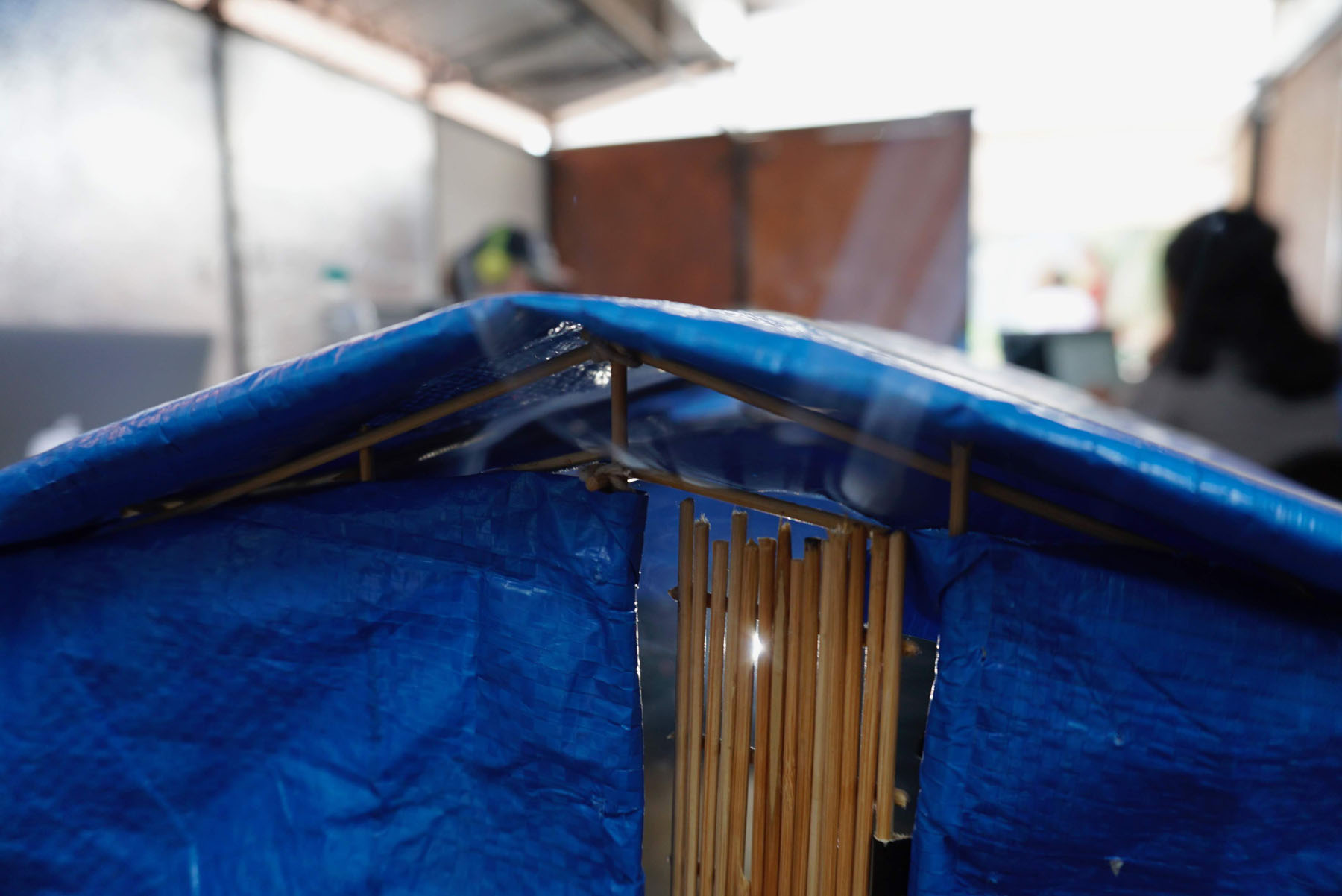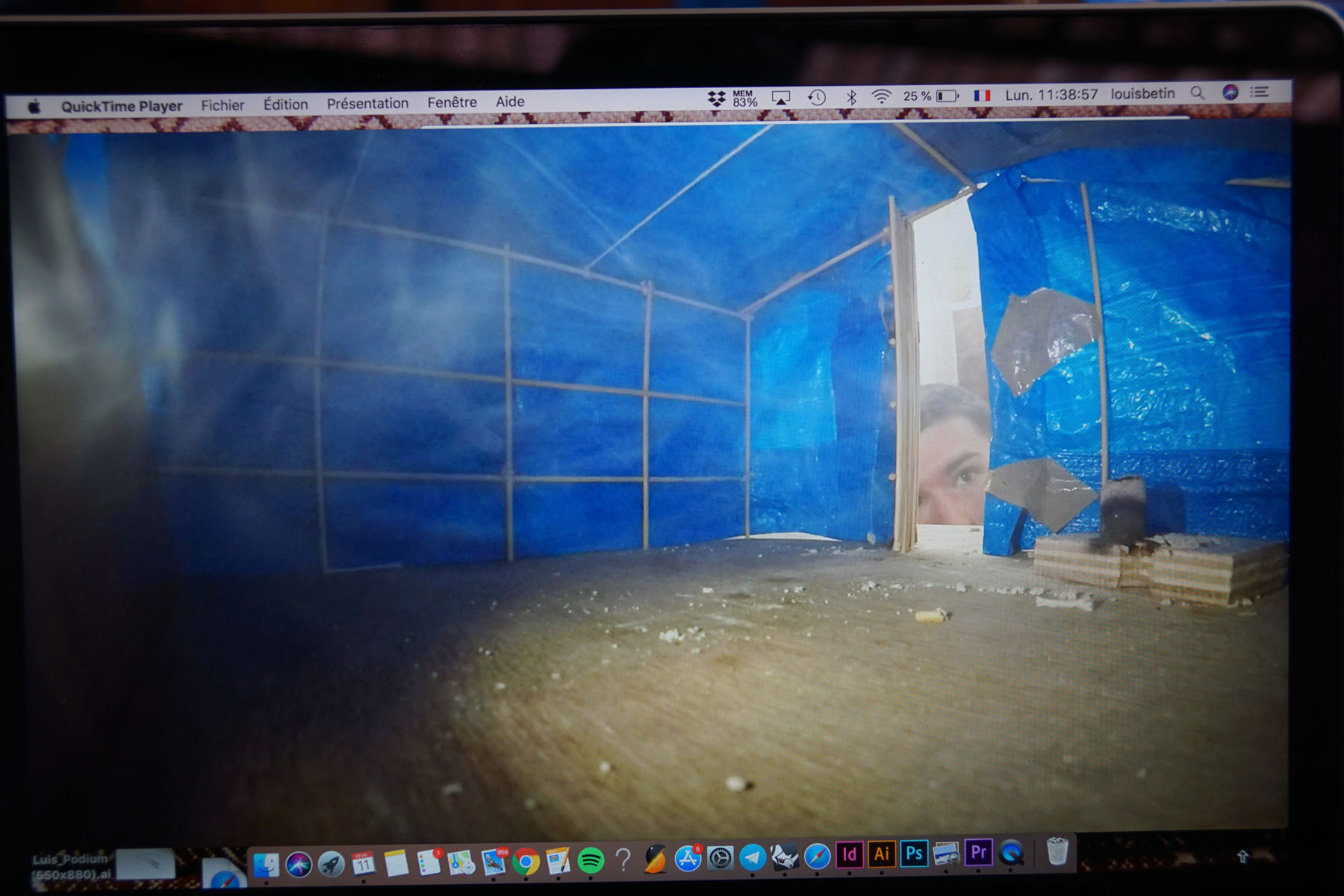With solution concepts and prototyping plans laid out, each member of the interdisciplinary teams could work on different aspects of the solution concepts.
Day 6: Develop
Building, modelling, planning

The designers set out to build their prototypes, the engineers calculated the electric needs or air flows, the business students laid out their business models and financials, and the social scientists mapped out the user scenarios.
At the end of the sixth day, students also had the possibility to go back out to meet the communities to further clarify their concepts.
In fact, the teams really self-organized in any way that worked best for them, since each team member could help and coach each other. A lot of trust and autonomy was always given to the students. One team decided to pivot after a more thorough understanding of the complexities of creating a gas stove solution. Despite the concern of losing time, the team understood that this is a normal and healthy occurrence in a design process. After a new brainstorm on their second main idea category, a new solution concept emerged: a solar-powered fan to direct all smoke out of the tents.
After preparing lists of required materials, the designers left with a SELCO team member to acquire the necessary goods around the city. Tarpaulin, MDF wood, plastic pipes, sheets of mesh, screws, bolts, glue and duct tape were brought back to the SELCO Foundation’s makerspace, ready to be used.
Although the all teams were instructed to design solutions within the “4 As” framework, the business and social scientist students were assuring that:
- The solutions were affordable for the customers
- The distribution channels could access them
- There was a communication strategy to make end-users aware about the products
- The solutions were culturally and behaviourally acceptable
The Value Proposition and Business Model Canvases were employed to assure a full and coherent understanding of the customers, the value provided and sustainability of the business itself. The business students also focused on financial planning, to be able to better support the viability of the solutions. In order to clearly map out the scenario within which the product would be used, the students were invited to sketch out a step-by-step user scenario in 6 blocks.
Through calculations, and rapid iterations, the engineering students worked with the designers to comprehend the energy needs of different fan models, potential and limitations of a passive ventilation system, the capacity of solar systems to generate energy, and necessary requirements for different appliances depending on the needs of street vendors.
In the afternoon, while the maker space buzzed, some team members went out to get more inputs from street vendors about their financial models, and others went out to meet the women cooking at their stoves, preparing dinner for their families.





